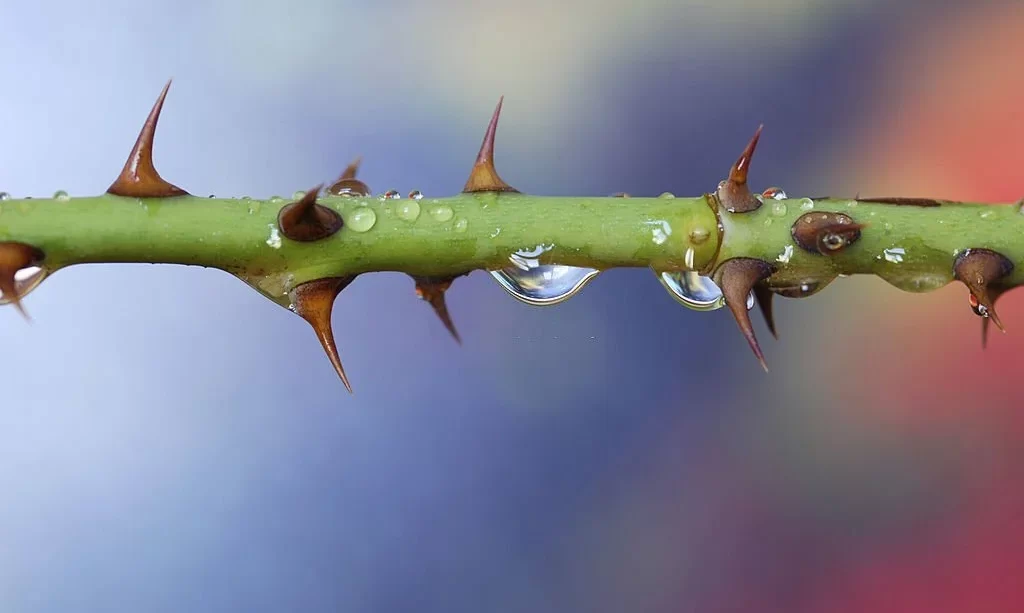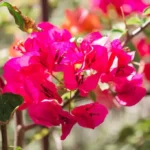Roses, often described as the “queens of the garden”, have long captivated the hearts and imaginations of people around the world. These exquisite flowers are synonymous with beauty, love, and romance, making them a cherished symbol in literature, art, and culture. Whether adorning a wedding bouquet, gracing the pages of poetry, or thriving in the corner of a well-tended garden, roses stand as living testaments to nature’s artistry and the depth of human emotions.
- Own Root – All of our pink climbing rose bushes at Heirloom Roses are own root, which means they will produce more blooms, be more hardy, and stay true to variety throughout their lifetimes, contrary to grafted roses.
- One Gallon – All of our climbing rose plants are 12-16 months old and delivered in one gallon containers with rich soil.
- Hardiness Zones: 6-10
- Exceptionally Fragrant & Continual Blooming – Will bloom continually throughout the growing season.
- Approximate Size: 10′ x 6′ – This is the indefinite size of Zephirine Drouhin when it reaches full maturity. Upon delivery, roses will be around 12-15 inches tall and may be partially defoliated to ensure plant health during shipping.
Roses in Bloom
Roses, with their delicate petals and mesmerizing fragrance, have a profound cultural and historical significance. Throughout the ages, they have been revered for their unmatched beauty and have found their way into various aspects of our lives. In gardens, roses take center stage, adorning landscapes with a riot of colors, from the deepest reds to the palest pinks and pristine whites.
Beyond their ornamental value, roses have played vital roles in rituals, celebrations, and expressions of affection. The act of giving a rose, whether as a single stem or a lavish bouquet, has become a timeless gesture of love and admiration. The allure of roses transcends borders and generations, and their presence is felt in celebrations of all kinds, from weddings to anniversaries.
As we dive into the world of roses, a fascinating question arises: Do all roses possess thorns, those prickly appendages that have become synonymous with the flower’s beauty? To unearth the truth behind this botanical mystery, we’ll explore the anatomy of roses and reveal the diversity within this beloved flower family, where thorns, or their absence, tell unique stories of adaptation and human cultivation.
Rose Anatomy
To unravel the mystery of thorns in roses, it’s essential to acquaint ourselves with the fundamental anatomy of these enchanting flowers. A typical rose plant comprises several key components:
- Stems: The main structural element of a rose plant, stems can vary in thickness and height, depending on the rose variety.
- Leaves: Rose leaves, usually serrated along the edges, are essential for photosynthesis, capturing sunlight to nourish the plant.
- Buds: Roses develop buds that eventually unfurl into stunning blossoms. These buds are a symbol of the promise of beauty yet to come.
- Thorns: The focus of our investigation, thorns, are small, pointed projections that can be found along the stems of many rose varieties.
- This is the rose with the biggest “Wow” factor. No two blooms are the same. Highly rated for gifting.
- Very exotic, Rare color combination in nature. rare plant. Perfect plant gift to leave a long lasting impression.
- Abracadabra comes Plant Gift ready
- Yellow and Red Stripes
- Grown in a transplant preferred size of 2 Quart. Fills in quickly.
Do All Roses Have Thorns?
The presence of thorns in roses isn’t universal; it varies from one rose variety to another. While the image of a rose is often associated with thorns, not all roses boast these prickly defenses. Roses can be broadly categorized into two groups: those with thorns and those without. This intriguing division highlights the captivating diversity within the world of roses.
Thorny Roses
Thorny roses, with their prickly stems, are often what come to mind when we envision these iconic flowers. The thorns serve several purposes:
- Protection: Thorns act as natural deterrents, discouraging animals and garden pests from nibbling on the plant’s tender stems and leaves.
- Support: In climbing rose varieties, thorns play a supportive role, aiding the plant in its ascent as it clings to trellises and structures.
- Symbolism: In both literature and culture, thorns are sometimes interpreted as symbols of the complexities of love and beauty—beautiful yet capable of causing pain.
Popular thorny rose varieties include the classic Hybrid Tea Roses and many of the wild rose species. These roses combine their alluring blossoms with a defensive layer of thorns, creating a captivating blend of beauty and protection in the garden.
As we continue our exploration, we’ll venture into the realm of thornless roses, where the absence of these prickly projections offers a different kind of appeal, one that emphasizes elegance and ease of handling.
- Own Root – All of our climbing rose bushes at Heirloom Roses are own root, which means they will produce more blooms, be more hardy, and stay true to variety throughout their lifetimes, contrary to grafted roses.
- One Gallon – All of our pink rose plants are 12-16 months old and delivered in one gallon containers with rich soil.
- Hardiness Zones: 6-10
- Lightly Fragrant & Continual Blooming – Will bloom continually throughout the growing season.
- Approximate Size: 10′ – 11’+ x 4′ – 5′ – This is the indefinite size of the pink climbing rose plant when it reaches full maturity. Upon delivery, roses will be around 12-15 inches tall and may be partially defoliated to ensure plant health during shipping.
Thornless Roses
In the enchanting world of roses, thornless varieties offer a unique charm that appeals to gardeners seeking the beauty of roses without the prickly inconveniences. Thornless roses, as the name suggests, lack the thorns or prickles that are characteristic of their thorny counterparts. This absence of thorns bestows upon them an elegance that makes them particularly attractive for certain gardening scenarios.
Thornless roses come in various forms, including Hybrid Tea Roses, Floribunda Roses, and Grandiflora Roses. These rose varieties showcase a range of flower colors, shapes, and sizes, ensuring that there’s a thornless rose to suit every garden’s aesthetic.
Cultivating Roses: Care and Pruning
Whether you opt for thorny or thornless roses, proper care and maintenance are crucial for nurturing healthy and vibrant rose plants. Here are some essential tips for cultivating roses:
- Pruning: Regular pruning is essential to encourage new growth, maintain shape, and remove dead or diseased wood. For thorny roses, wear protective gloves to avoid thorn-related injuries.
- Watering: Roses appreciate consistent moisture but don’t like to sit in waterlogged soil. Adequate watering is crucial for their well-being.
- Fertilizing: Apply balanced rose fertilizer to provide essential nutrients for growth and flowering.
- Disease and Pest Control: Keep an eye out for common rose diseases and pests and take appropriate measures for prevention and control.
- Winter Protection: In cold climates, protect rose plants from harsh winter conditions by mulching and, for thorny roses, consider pruning back long canes to reduce wind damage.
- FOR USE ON: Use Rose-tone organic fertilizer for all types of roses including knockouts, and climbers. Also, for flowering plants including viburnum, bougainvillea & clematis.
- CONTAINS: Rose-tone is a rich blend of the finest natural & organic ingredients enhanced with our exclusive Bio-tone formula; 4-3-2 Fertilizer analysis with 5% calcium. Rose-tone is environmentally Safe – No sludges or toxic ingredients.
- WHEN / HOW TO USE: Best to use Rose-tone fertilizer monthly through the growing season; generally, May through September. Apply to the soil around the drip line of the plant and then water thoroughly. Rose-tone is ready to use and requires no mixing.
- FOR ORGANIC GARDENING: Rose-tone is approved for organic gardening; It is a registered Organic Input Material meaning it meets all requirements for organic production.
- MADE IN THE USA: Product of the Espoma Company. The leader in natural organics since 1929.
Conclusion
In the world of roses, the presence or absence of thorns adds an intriguing layer of diversity and symbolism. Thorny roses, with their protective thorns, embody a blend of beauty and resilience, while thornless roses offer a different kind of elegance and ease of handling. The choice between thorny and thornless roses ultimately depends on individual preferences and gardening goals.
As we tend to our rose gardens, let us appreciate the rich tapestry of this beloved flower family, where thorns, or their absence, tell unique stories of adaptation, symbolism, and human cultivation. Whether you find beauty in the petals or charm in the thorns, roses continue to enchant and inspire, reminding us of the enduring connection between nature and the human spirit.







